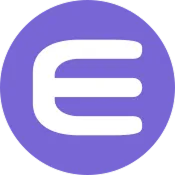When evaluating blockchain platforms, it's essential to look beyond surface-level features and understand the underlying technology that drives their performance and use cases. Zilliqa and Enjin exemplify two distinct approaches to blockchain development: one prioritizing scalability and security for decentralized applications, and the other focusing on NFT infrastructure and gaming integration. This comprehensive comparison explores their architecture, consensus mechanisms, smart contract capabilities, and ideal user bases, guiding crypto enthusiasts and investors toward informed decisions.
Short on time? Jump to Zilliqa vs Enjin Comparison
Understanding Zilliqa and Enjin ?
Zilliqa, launched in 2017, pioneered the concept of sharded blockchain technology to address the scalability trilemma—security, decentralization, and scalability. Its unique architecture divides the network into multiple shards, each capable of processing transactions in parallel, significantly increasing throughput. Zilliqa employs its own smart contract language, Scilla, designed with formal verification to enhance security, making it suitable for enterprise-grade decentralized applications. The platform’s focus on high performance and low transaction fees positions it as a robust infrastructure for scalable dApps.
Enjin, on the other hand, established itself as a leader in blockchain-based gaming and NFT ecosystems. Its blockchain is optimized for high-volume NFT minting, transfers, and gaming assets, supporting thousands of transactions per second with low fees. Built on a substrate architecture, Enjin integrates NFT management, marketplace, and governance features directly into its ecosystem. Its native token, ENJ, underpins the network’s economy, enabling users to stake, govern, and participate actively in platform development, all while emphasizing seamless integration with existing game engines and platforms.
While Zilliqa's core strengths lie in scalability and smart contract security, Enjin excels in creating a user-friendly environment for gaming assets and NFTs, with a focus on interoperability and community-driven governance. Both platforms demonstrate innovative solutions tailored to their respective markets—blockchain scalability for Zilliqa, and asset tokenization for Enjin—highlighting the diversity within blockchain technology development.
Understanding their architectures and features reveals how each platform addresses unique challenges: Zilliqa's sharding vs Enjin's NFT-centric protocol. This comparison sheds light on their technological differences, strategic focuses, and potential use cases, empowering users to select solutions aligned with their needs.
Key Differences Between Zilliqa and Enjin
Scalability and Architecture
- Zilliqa: Zilliqa's groundbreaking sharding architecture allows the network to scale linearly as more nodes join, enabling high throughput suitable for enterprise applications. Its layered blockchain design separates transaction data and node management, optimizing for speed and security. This scalable infrastructure makes Zilliqa ideal for decentralized apps demanding high transaction rates and low latency.
- Enjin: Enjin employs a substrate-based blockchain optimized for NFT transactions and gaming assets. Its dual-layer proof-of-stake mechanism ensures security while supporting high transaction volumes typical in gaming ecosystems. The platform's architecture integrates NFT functions at a protocol level, facilitating seamless asset creation and transfer.
Smart Contract Development
- Zilliqa: Zilliqa uses Scilla, a safe-by-design smart contract language that emphasizes formal verification and security. It allows developers to write reliable, bug-free contracts, making it suitable for financial and enterprise applications. Its compatibility with EVM via upcoming upgrades enhances flexibility for Solidity developers.
- Enjin: Enjin's smart contracts are integrated within its NFT-focused ecosystem, supporting asset minting, royalties, and marketplace functions. While not as flexible for general-purpose dApps as Zilliqa, Enjin's contracts are tailored for asset management, gaming, and NFT interoperability, emphasizing ease of use and integration.
Consensus Mechanism
- Zilliqa: Zilliqa employs a hybrid consensus mechanism combining Practical Byzantine Fault Tolerance (pBFT) with proof-of-work for node election, ensuring instant finality and security. Its Fast-HotStuff upgrade reduces block finality time further, improving network efficiency.
- Enjin: Enjin utilizes a nominated proof-of-stake (NPoS) consensus, where ENJ token holders stake their tokens to nominate validators, securing the network through community participation. This model supports high transaction throughput while maintaining decentralization.
Token Utility and Ecosystem
- Zilliqa: Zilliqa's native token, ZIL, powers transaction fees, smart contract execution, and staking. It incentivizes miners and validators, fostering a decentralized ecosystem focused on scalable dApps and financial services.
- Enjin: Enjin's ENJ token acts as a reserve backing NFTs, facilitating asset minting, trading, and governance. ENJ rewards community participation through staking and governance, creating a vibrant ecosystem centered on gaming assets and collectibles.
Target Use Cases
- Zilliqa: Zilliqa is ideal for scalable decentralized applications, enterprise solutions, and financial services requiring high throughput and security. Its architecture supports complex smart contracts and microtransactions efficiently.
- Enjin: Enjin is tailored for gaming, virtual assets, and NFT marketplaces. Its infrastructure supports seamless asset creation, management, and transfer, making it perfect for game developers and digital artists seeking NFT integration.
Zilliqa vs Enjin Comparison
| Feature | ✅ Zilliqa | ✅ Enjin |
|---|---|---|
| Transaction Speed | Over 2,800 TPS | Up to 5,000 TPS |
| Block Time | Approximately 2 seconds | 6 seconds |
| Smart Contract Language | Scilla (secure, formal verification) | NFT-specific protocols, integrated with assets |
| Consensus Mechanism | pBFT + proof-of-work | Nominated proof-of-stake (NPoS) |
| Primary Use Case | High-throughput decentralized apps | NFTs and gaming assets |
| Native Token | ZIL | ENJ |
Ideal For
Choose Zilliqa: Developers and enterprises seeking scalable, secure smart contract platforms for diverse dApps.
Choose Enjin: Game developers, digital artists, and NFT enthusiasts wanting a robust ecosystem for asset creation and trading.
Conclusion: Zilliqa vs Enjin
Zilliqa and Enjin exemplify the diversity in blockchain innovation, with each addressing distinct market needs. Zilliqa’s pioneering sharding technology offers unparalleled scalability and security for broad decentralized applications, making it a strong choice for enterprise use cases demanding high throughput and formal contract verification.
Conversely, Enjin’s focus on gaming and NFTs creates an ecosystem optimized for asset management, marketplace integration, and community governance. Its architecture facilitates seamless NFT minting, transfer, and interoperability, ideal for developers and creators in the digital art and gaming sectors. Ultimately, the choice between the two depends on whether the priority is scalable smart contracts or asset-centric blockchain solutions.






